| Reviews & Columns |
|
Reviews DVD TV on DVD Blu-ray 4K UHD International DVDs In Theaters Reviews by Studio Video Games Features Collector Series DVDs Easter Egg Database Interviews DVD Talk Radio Feature Articles Columns Anime Talk DVD Savant Horror DVDs The M.O.D. Squad Art House HD Talk Silent DVD
|
DVD Talk Forum |
|
|
| Resources |
|
DVD Price Search Customer Service #'s RCE Info Links |
|
Columns
|
|
|
Cut to the Chase! The Charley Chase Collection
A must for silent comedy fans. Milestone has released Cut to the Chase! The Charley Chase Collection, a 2-disc, 16-short gathering of silent comedian Charley Chase's work from the years 1924 to 1926, with several of the titles apparently new to DVD. A silent clown whom appreciative audiences considered an "A-lister" among the likes of Chaplin, Keaton, and Lloyd, Chase never received the whole auteur canonization those three masters were given back in the 1960s and 1970s (even though Chase was directly involved in the writing and direction of his shorts, too). However, after watching Cut to the Chase! The Charley Chase Collection, what's readily apparent is that almost one hundred years later, Chase can make you laugh just as long and hard as The Big Three do―and that's all that really counts in the end. No extras for these as-good-as-you-can-get black and white transfers (although we do get some terrific musical scores from the likes of Ben Model, Dave Knutsen, The Mont Alto Orchestra, David Drazin, and Donald Sosin). Let's look briefly at the titles here in Cut to the Chase! The Charley Chase Collection.
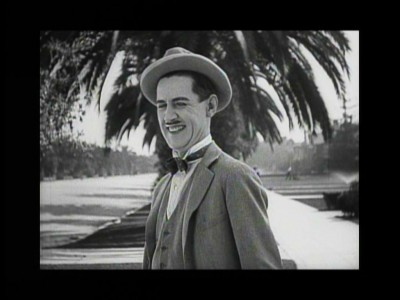
Just a note to the hard-core silent comedy fans who might read this review. I'm certainly no expert on silent comedy, but I was lucky enough to grow up during an era when a surprising amount of titles could still be found on television, from Youngson's compilation films, to daily Our Gang/Little Rascal and Hal Roach comedy packages (with some including a silent short or two), to late night marathons on a local independent station (programmed, no doubt, by some dedicated fan of the format), as well as so many subsequent comedy movies and shorts that owed their laughs directly to those silent clowns (certainly all The Three Stooges shorts that are burned into my brain, some even directed by Chase himself). So I'm a fan, not an expert. I've probably only seen half a dozen Chase shorts (my favorite is the one where he's walking around the building with all the brides), but I adore that spirited, fresh, jaunty all-American image he projected, the "nice" young man who had all those embarrassing situations happen to him. It's a distinctive comedic personality, as different from Chaplin's little immigrant tramp, Keaton's surreal, dreamlike stone face, and Lloyd's persevering American go-getter with daredevil survival skills, and one that's remarkably approachable today (should not Chase's domestic comedy shorts get some credit as a major influence on our TV sitcom format today?).
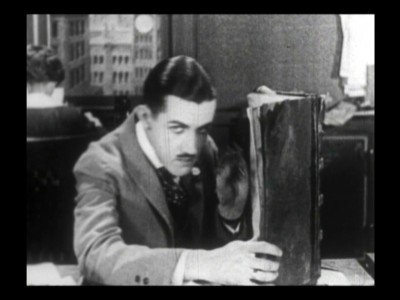
Disc one opens with April Fool, a one-reeler released in May of 1924. Chase's "Jimmie Jump" character is a reporter at the Morning Megaphone, and on April 1st, everyone is dying to get in their April Fools' practical jokes. While not remarkable in any way, April Fool does have Chase getting across that bemused ability to laugh at himself when something terrible happens to him―a trait enhanced by the Roach Studio visual signature of their comedians breaking the fourth wall and connecting directly with the audience―one that's quite winning. Chase just has that kind of easy-going charm that viewers respond to, something that Harold Lloyd exploited, as well. One-reeler The Fraidy Cat, released in March of 1924, finds Chase as Jump a quivering coward who, once he finds out (incorrectly) that he's going to die, fights back against his romantic rival...and the little neighborhood bullies that taunt him. Probably best-noted today for the debut of Roach's Our Gang kids (that's little Joe Cobb as the smallest―and meanest―little brat), The Fraidy Cat's set-up is certainly familiar, as is the slapstick, but again, Chase's ability to engender audience sympathy during a time period when many contemporaries relied strictly on violent knockabout, is notable.
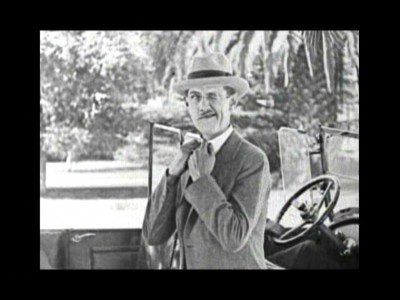
Bad Boy, released in April, 1925, has Chase's Jimmie Jump a rich, pampered mamma's boy who must start from the ground up in his father's steel mill. His girlfriend (the deliciously sexy Martha Sleeper) suspects Jimmie might not be so manly, either, when she sees him dance like a wood nymph at his mother's lawn party, so Jimmie must pretend he's gangster "Bad Boy" Brodie at a local rough 'n' tumble dance hall to get her back. Helmed by frequent collaborator Leo McCarey, the future Oscar-winning director of such talkie classics as Duck Soup, The Awful Truth, Love Affair, The Awful Truth, and Going My Way, two-reeler Bad Boy shows a marked jump ahead for Chase, giving him a funny scenario that's open to increasingly sophisticated (and often hilarious) improvised gags (something both Chase and McCarey were noted for on the set). Structured beautifully between the three set-ups―the steel mill, Chase's mother's lawn party, and the dance hall―gags come rapidly here, with the best ones being Chase's dear little luncheon tea knocked over by his coworker, his absolutely paralyzing take-off on Isadora Duncan (those knobby knees and skinny legs are a scream), and the escalating dance hall sequence, where Chase and the cute Sleeper execute a very funny shimmy. The core of the set-up is solid (Chase wanting to please everyone and screwing up in the process), and the execution very amusing.
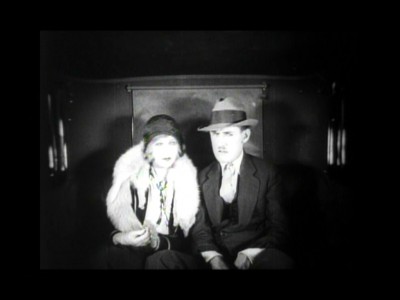
Released in October of 1925, The Caretaker's Daughter, directed by McCarey (and by all accounts for most of their collaborations, by Chase, as well), finds Charley married to pretty Katherine Grant (his frequent co-star during this period), who's suspicious of Charley's outside activities. When Charley agrees to ferry his boss' girlfriend (sexy Symona Boniface) up to a remote cabin, he has no idea she's the wife of the gangster Charley cheated into buying his wreck of a car. A delightfully-tempoed bedroom farce, The Caretaker's Daughter features a fair number of highly amusing sight gags (the opening one with the car on the hill is a beaut). Chase gets a bravura workout of some funny faces when he's signaling the car-buying gangster, and all the shenanigans with the fake moustaches at the end is quite silly and fun (my favorite moment is a small one: Chase breaking the fourth wall and giving us a spontaneous look of conspiratorial appreciation when sexy Boniface gets into his car). Be Your Age, from November, 1926, has law clerk Charley blackmailed by his attorney boss into wooing an elderly widow for a $10,000 loan Charley needs; that way, the attorney can control her estate. What Charley didn't count on was the widow's older son, played by Oliver Hardy. A middling effort from McCarey and Chase, Be Your Age promises much more than it delivers, with the viewer ratcheted up to expect big, funny set-pieces at the widow's mansion...only to have some scattershot gags that only partially work. Charley acting bashful in the opening scene is the short's best moment...and it's all downhill from there. Bromo and Juliet, from September, 1926, is another lesser Chase vehicle where Charley, in order to satisfy his pretty but demanding fiancé, has to appear in a benefit performance of Romeo and Juliet. One particularly good gag―Charley, his skinny legs filled out with sponges that have gotten wet, "urinates" so to speak on a double-decker bus passenger who thinks it's from the baby Charley's holding―doesn't make for a solid short...although I did crack up at William Orlamond, drunk as a skunk, taking a bath in a department store window bathroom mock-up. Charley acting drunk isn't as funny as sober, smart, embarrassed Charley trying to worm his way out of a situation, and that's where Bromo and Juliet falters.
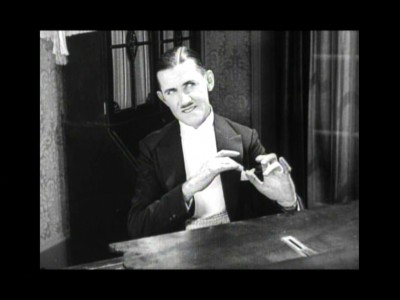
Dog Shy, from April, 1926, has dog-scared Charley hopping into a phone booth to avoid a terrifying canine, and picking up the phone to talk to Mildred June, a pretty heiress who's being forced to marry a suspicious Duke. Charley agrees to help her by coming to her house, where he's hired as the butler. Not only does Charley have to find out, among all the flappers there for a party, which one is Mildred, he has to "bathe the Duke"...which should be Duke the Dog. Packed full of funny gags and beautifully-wrought reaction shots from Chase (his pantomime of telling the human Duke he's going to be washed is priceless), Dog Shy is one of the funniest shorts in this collection, aided in no small measure by the appearance of Hal Roach's wunderkanine, Buddy, who steals every scene he's in (a star's a star, and Buddy has "it"). It's a solid comedic premise worked out to a near-perfect tempo. Charley My Boy, from January, 1926, has the old canard of a controlling father wanting to marry off his daughter to a rich, old miser, with Charley falling for the girl, arriving at her home by mistake to woo her away from her parents. Charley My Boy has that distinct McCarey feel of spontaneity and improvisation, with several set-pieces achieving big laughs (Charley getting himself and pretty Katherine Grant muddy, Charley stamping letters and sticking his tongue out at his office rival, the final big gag of Charley's plus-fours filled with bootleg gin), while the central dinner sequence achieves an inspired lunacy as sleeping Charley leaves his plate-holding hand up as the butler keeps filling it with lamp chops (the father and old Charleyhorse stealthfully trying to spear a few is priceless).
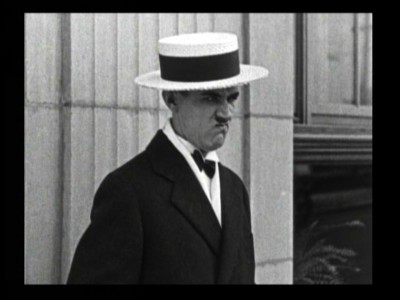
Disc two kicks off with The Uneasy Three, from November, 1925, where, in a change of pace, Charley plays a prospective thief out to nab a fabulous jewel with his two cohorts. Whether or not this is a direct take-off of Chaney's The Unholy Three is open to debate, but except for a couple of good sight gags (the balloon in Charley's hat is a classic, reused countless times in later comedies), the pacing and writing is off here, with Chase's persona switch not inherently amusing, and a lack of a solid through-line of humorous situations. Innocent Husbands, on the other hand, from August, 1925, is a beautifully-executed farce that builds to a terrifically funny finale, with one inventive sight gag after another giving this a jazzy, silly feel (that final séance sequence is a gem of tight editing). Isn't Life Terrible?, from July, 1925, starts off with Charley trying to win a cruise for his wife via a pen-selling contest...complete with layabout brother-in-law Oliver Hardy coming along for the ride. A hybrid sitcom/vacation disaster plotline gives Isn't Life Terrible? a herky-jerky feeling, although its individual parts play fine on their own. Certainly the best moment of the sitcom half is Chase's efforts to sell a pen to gorgeous Fay Wray, winding up with ink all over his face (she charmingly suppresses her laughter), while quite a bit of the cruise gags, while familiar, are nicely done (little Dorothy Morrison steals the show when she gets seasick). A good example of Chase's expertise at escalation comedy. What Price Goofy?, from June, 1925, has Charley the object of a very distrustful, suspicious wife (the perky Katherine Grant again), who, when told by a gossipy friend that Charley was chatting up a pretty stranger, suspects the worst. When Charley allows a visitor to stay over, he doesn't realize "Professor Brown" is a sexy brunette (the lovely Marjorie Whiteis). Another Chase vehicle aided immeasurably by Roach's Buddy the Dog, the fairly standard comedic set-up here is given a boost by the adorable pooch (his playing hide and seek with the garter is hilarious), while McCarey's direction during the hide-and-seek games the adults play in the bathroom, is remarkably facile. A good, solid Chase entry.
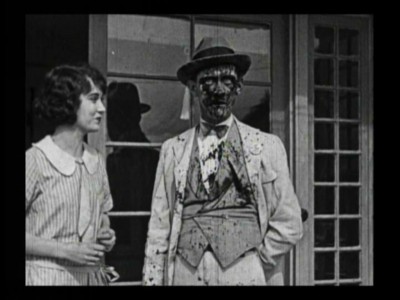
Long Flive the King, from June, 1926, has Charley a condemned man marrying a foreign princess who must wed within 24 hours to retain her royal crown. She returns to her country, only to find Charley following, having been pardoned at the last moment. Intent on being a king, Charley must battle palace intrigue to stay with his love. A delightful Ruritanian spoof, Long Flive the King finds Chase at his goofy non-athletic best, bringing his laid-back American wisecracker persona to a Eastern European setting and getting a lot of mileage out of it. The final duel sequence is hilariously inventive (I love the guys all having to jump up and down because they think they're poisoned), with director McCarey achieving a breezy, spirited tone. Mama Behave, from February, 1926, find suspicious husband Charley fed up with his wife's desire he act more like his twin brother...so he impersonates "Jim Chase" to see if he can seduce his wife. It's amusing to see "Good Time" Charley Chase play a character who deliberately flubs the Charleston to stay home at night, while the standard bedroom farce mechanics of Chase playing both twins, racing back and forth from sleeping Charley to visiting "Jim," is, as expected, worked out well.
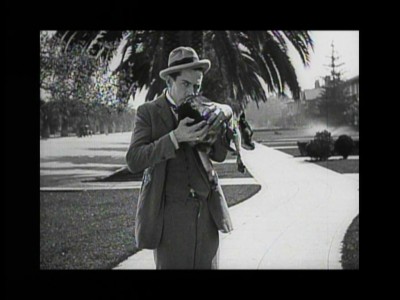
The justly famous Mighty Like a Moose, from July, 1926, shares some similarities with Mama Behave, but with a unique twist: homely couple Chase and Vivien Oakland get plastic surgery, don't recognize each other, and subsequently flirt together at a party. Suspending your disbelief that either one wouldn't recognize each other with a new nose and choppers, Mighty Like a Moose is paced and directed with pinpoint accuracy for a delicate build of comedic anxiety. Eschewing overt sight gags (until the final, paralyzing one with Buddy the Dog), Mighty Like a Moose shows Chase in full flower of his sophisticated comedy of embarrassment, as he literally battles himself during the finale to impress his wised-up wife, right down to humiliating himself twice with fake suicide attempts, before his wife laughs at his antics...and socks him in the jaw. About as perfectly a paced two-reeler as I've ever seen, Mighty Like a Moose's comedy is situational, not merely gag-oriented, and it shows that by this point in their association, Chase and McCarey were turning out material the equal of the Big Three. Finally, Mum's the Word, from May, 1926, can't help but feel a little anticlimactic coming after Moose, even though it's a perfectly acceptable Chase effort. Chase has come home to visit his mother, but he must pretend to be her new valet in order for her new husband to warm up to him, with all the expected slapstick results. Some amusing sight gags (the big shoes on little Martha Sleeper's feet), and the shaving sequence are highlights of this familiar, but fun, outing.
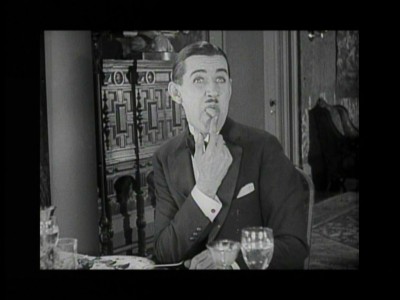
The DVD:
The Video:
I'm not a collector of Charley Chase videos and DVDs, so I can't compare the transfers of titles that appeared in earlier incarnations and now in Cut to the Chase! The Charley Chase Collection. All I can do is comment on these as I see them...and considering the age and the cavalier (to say the least) way in which silents were literally abandoned over the decades, these look pretty good. Windowboxed to 1.33:1, the quality of the prints used vary from title to title, with some looking quite clean, and others coming off dark (Bromo and Juliet) or badly damaged with framing issues (Charley My Boy). Considering how silents were treated by their makers and studios, its miraculous these survive at all, so....
The Audio:
The Dolby Digital English split mono is just fine, with acceptable levels and little fluctuation.
The Extras:
No extras for Cut to the Chase! The Charley Chase Collection.
Final Thoughts:
Essential viewing for anyone interested in silent comedy. It's probably a cliché now to comment on how Chase doesn't get the respect he deserves...such is the increasing level of awareness he's getting now on DVD. It's always fun to "rank" movie stars and performers as to their importance and influence, and surely the fascination with once-popular Chase's fall into relative obscurity heightens the appeal of "rediscovering" him now. However, the most important aspect of his work is painfully obvious: he's very funny. And that's a good enough epitaph. I'm highly, highly recommending Cut to the Chase! The Charley Chase Collection.
Paul Mavis is an internationally published film and television historian, a member of the Online Film Critics Society, and the author of The Espionage Filmography.


|
| Popular Reviews |
| Sponsored Links |
|
|
| Sponsored Links |
|
|
| Release List | Reviews | Shop | Newsletter | Forum | DVD Giveaways | Blu-Ray | Advertise |
|
Copyright 2024 DVDTalk.com All Rights Reserved. Legal Info, Privacy Policy, Terms of Use,
Manage Preferences,
Your Privacy Choices | |||||||













